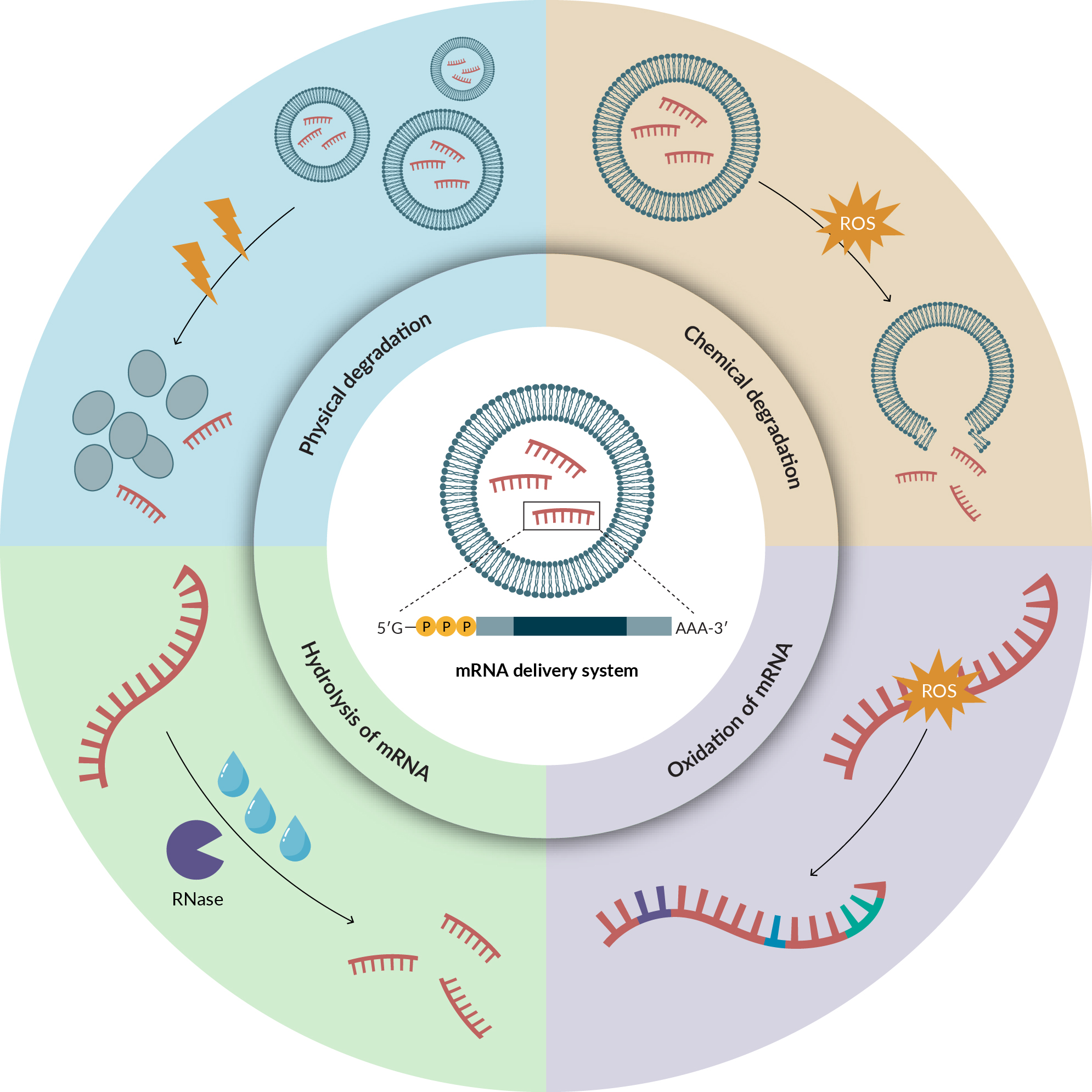Challenges and advances of the stability of mRNA delivery therapeutics
Nucleic Acid Insights 2024; 1(2), 101–113
DOI: 10.18609/nai.2024.015
mRNA therapeutics have garnered significant attention in the biomedical realm, showing immense potential across a spectrum of applications from COVID-19 to cancer treatments. Their ability to trigger precise protein expression, particularly in genome editing, is pivotal in minimizing off-target effects. At the core of mRNA therapy lies a dual-component system, comprising the mRNA itself and a delivery vehicle. The breakthrough success of novel COVID-19 vaccines has catapulted lipid nanoparticles to prominence as the preferred delivery vehicle. However, despite their US FDA approval and efficacy, lipid nanoparticles face a significant challenge: poor stability at room temperature, which limits their applications in various geographic regions with disparities in infrastructure and technology. This review aims to dissect the issue of stability inherent in lipid nanoparticles and other mRNA delivery platforms such as polymer-based materials and protein derivative materials. We herein endeavor to unravel the factors contributing to their instability and explore potential strategies to enhance their stability. By doing so, we provide a comprehensive analysis of the current landscape of mRNA delivery systems, highlighting both their successes and limitations, and paving the way for future advancements in this rapidly evolving field.
Graphical abstract

